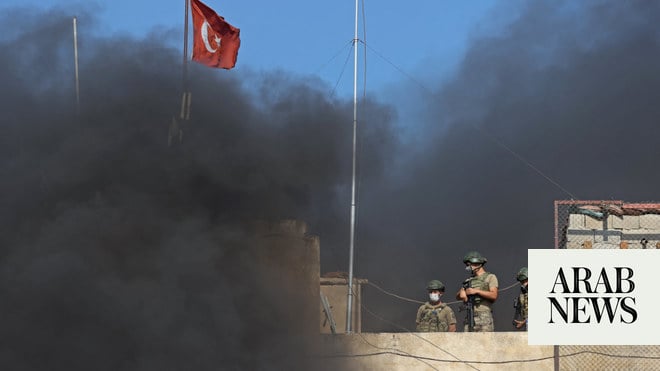
In northwestern Syria’s Idlib province, near the Turkish border, small pockets of opposition still persist in the face of the military onslaught from the combined forces of Bashar Assad and his Russian and Iranian allies. The locals, a significant proportion of whom are ethnic Turkmen, have absorbed waves of refugees from other rebel areas in the country, most notably from nearby Aleppo, and the region has become a last stand for the Sunni opposition to the Damascus government.
Their resilience has owed much to two crucial factors. The first is that neighboring Turkey is operating in the area, partly out of concern for the Sunni Turkmen living there and partly to disrupt the activities of Kurdish rebels on both sides of the border.
The second is that the region was, and still remains, a breadbasket. This has allowed both the native residents and the incoming refugees to sustain their armed resistance to Damascus, even with little humanitarian aid from the outside.
Damascus cannot do anything about Turkey. The best it can hope for is that the increasingly cordial tone between Ankara and Moscow will constrain Turkish operations on the ground, as both sides will want to avoid accidental direct confrontation while they stomp all over Idlib for their own respective purposes.
But the Assad regime can do something about Idlib’s food production: Burn it to the ground and starve the opposition into submission. As we have come to expect from Damascus, that is exactly what the government is doing.
It is hard to judge whether Assad expects that this will even convince the opposition in Idlib to surrender. Previous starvation sieges in other areas of the country have not sped up the end of hostilities. And whenever the regime does manage to subdue an opposition enclave, it is hardly magnanimous in victory. Those opposing Assad are not given a rational choice between the ongoing misery of conflict and a better, more tranquil life after surrender. They are given a choice between being killed fighting and being tortured and killed on their knees after having surrendered.
Whenever the regime does manage to subdue an opposition enclave, it is hardly magnanimous in victory.
Dr. Azeem Ibrahim
The rather more likely explanation is that the goal of Damascus is something more akin to population cleansing. By starving the rebelling populations, it likely initially aims to sap them of their capacity to fight and resist. But this tactic dovetails with a greater strategic goal of pushing opposition-inclined populations out of the country, and across the border into Turkey.
Turkey is already doing a remarkably decent job of absorbing, and in some cases even integrating, a huge number of Syrian refugees. Indeed, some authorities in Turkey are no longer treating the Syrian refugee problem as a temporary one, but rather administer the crisis with an understanding that the new demographic situation is likely permanent. But even
Turkey cannot be looking forward to having to absorb another million or so refugees from Idlib on top of the 3.5 million Syrians it already cares for.
Yet, just like the Assad regime cannot do much about Turkey’s incursions south of the border, the Turkish government cannot do much to prevent the starvation tactics of Damascus in Idlib, and the likely refugee inflow this will eventually produce. Overarching the competing tactical and strategic positions of the two neighbors in Idlib is the stern gaze of Moscow, which, for the time being, has no incentive to take sides, but which neither side wants to upset by launching a direct assault on the other.
Underfoot this unedifying strategic dance, the people of Idlib, civilians and opposition fighters alike, will be stomped, until the breadbasket of Syria is burned to the ground and a new wave of refugees pours out of the country.












